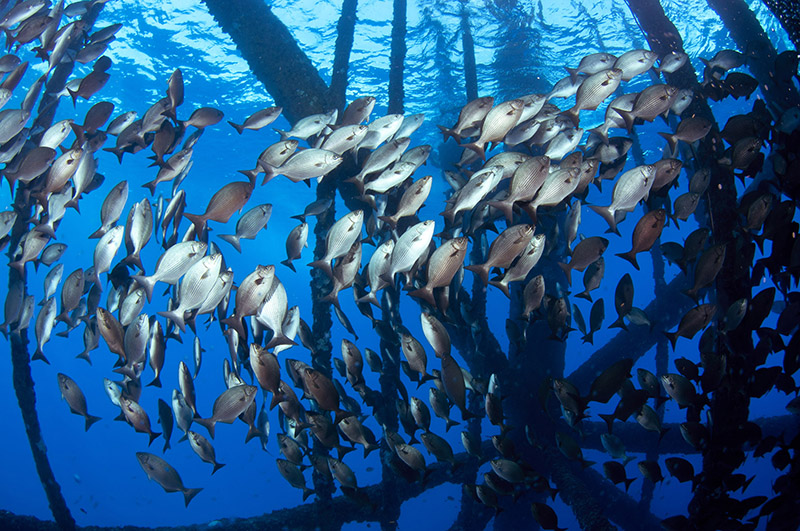Shhh, marine mammals crossing. If there were road signs on the ocean, one might read like this one. While signs seem far-fetched, a draft ocean noise strategy could lead to regulations that affect the maritime industry.
There’s growing evidence that marine animals are increasingly disturbed by noises from human activity — such as commercial ships and oil drilling — and that these sounds mess up their abilities to communicate, navigate, find food, avoid predators, reproduce and be aware of their surroundings.
A few weeks ago, the National Oceanic and Atmospheric Administration announced a 10-year Ocean Noise Strategy to reduce underwater noise pollution that scientists say is more harmful to sea life — from whales and dolphins to shrimp and crabs — than originally thought.
Whales and dolphins, for example, possess remarkable hearing and communicate through various sounds. They essentially see the ocean through sound. But Richard Merrick, chief scientist for NOAA’s fisheries service, told The New York Times earlier this month that off the coast of Massachusetts whales have to try so hard to be "heard" above the man-made din that they just give up and no longer appear to register the sounds of ships or associate these sounds with danger. As a result, they often don’t move out of harm’s way.
Engine noise from ships is a big culprit, and it is doubling every year as ships get larger and emit huge amounts of sound energy at low frequencies that travel quickly through the sea, according to Christopher Clark, a Cornell University marine bioacoustics expert.
The good news is that the problem is preventable, and that technologies are being developed to reduce noise from ships (making propellers quieter and placing engines so that they are not touching the hull). Progress has also been made on understanding the kinds of noises made by ocean creatures. Did you know that sea urchins feeding on rocks make a rasping sound as they scrape off the algae?
The new strategy recommends that NOAA take a comprehensive approach to the noise problem by monitoring and predicting ranges of noises, such as those from vessel traffic, pile-driving at wind farms, sonar used in military exercises, and seismic air guns used to identify oil and gas reserves in rock layers under the seabed. This is a shift from current policy, which focuses on specific noise sources and requires workers to temporarily stop high-intensity sonar or seismic activity when there are animals nearby. The new roadmap recognizes that noise is a menacing and cumulative ocean pollutant that can travel for miles and comes from a range of industrial and military practices that need to be better managed — an approach that conservation groups and scientists have advocated for a long while.
Michael Jasny, director of the Natural Resources Defense Council’s Marine Mammal Protection Project, said in a recent blog post that this is a positive change, but expressed disappointment that it lacked a specific plan and schedule for implementation.
It remains to be seen how the strategy will be carried out, and if Congress will back it up with a budget. The potential implications for ship traffic or offshore energy development are also unclear. But at least it’s a start, and the maritime community can get an oar in the process. NOAA is accepting public comments through July 1.





